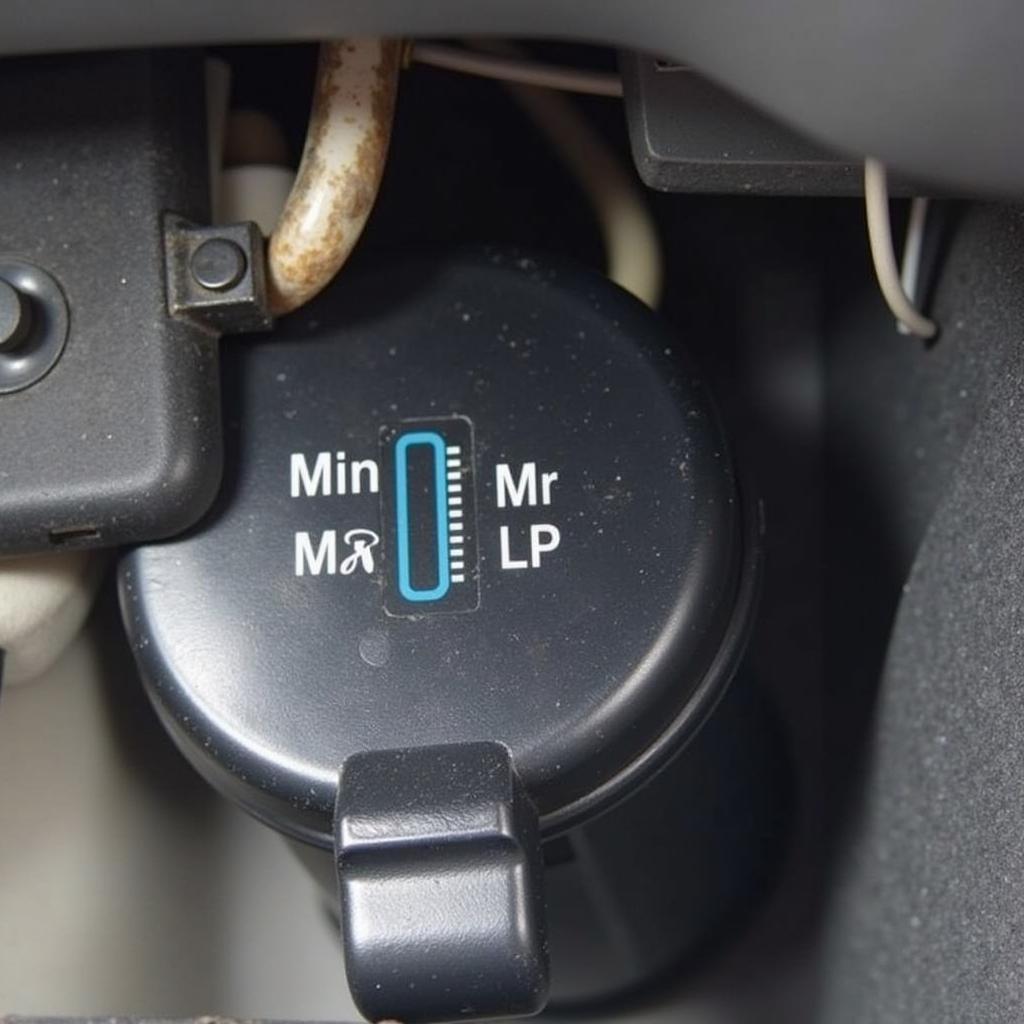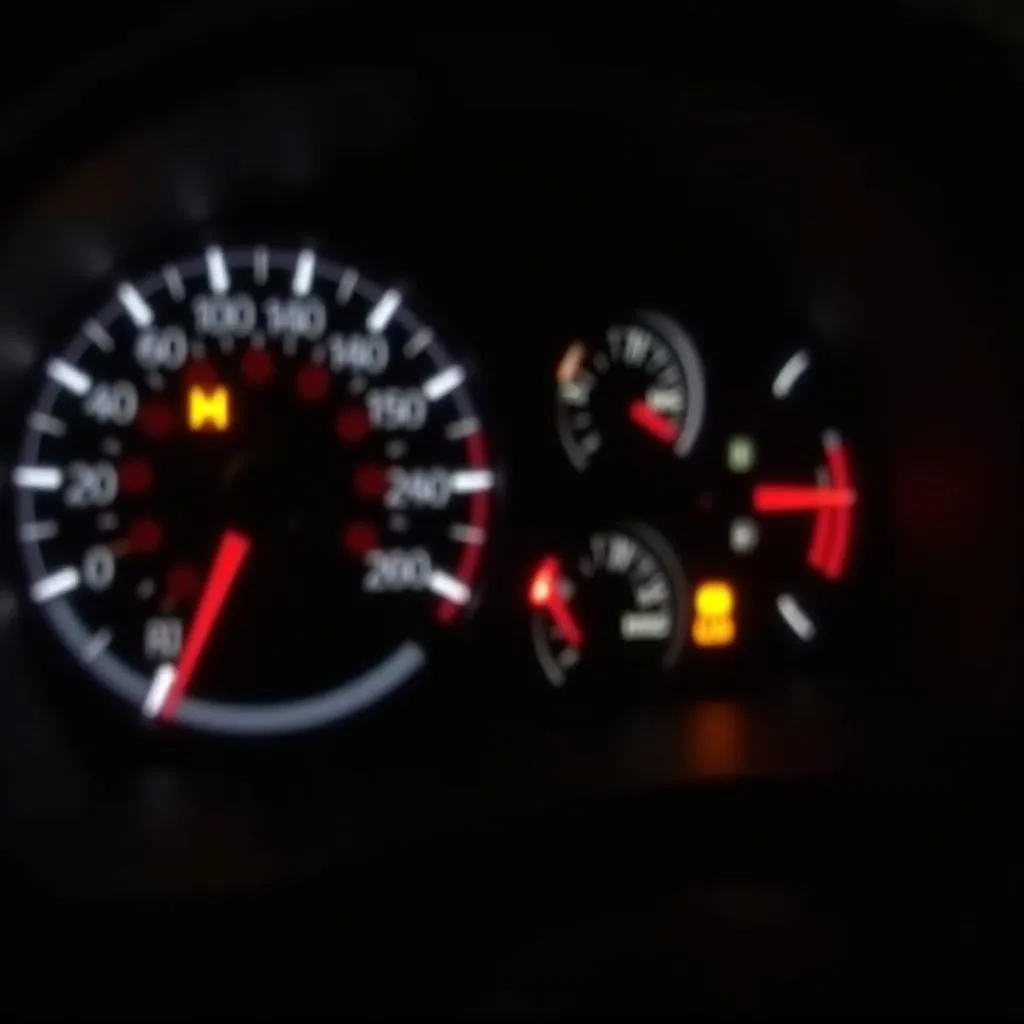The brake warning light on your dashboard is a crucial safety feature in your 2006 Chrysler Town and Country. When illuminated, it signals a potential problem within your braking system that requires immediate attention. Ignoring this warning light can lead to dangerous driving conditions and costly repairs. This guide will walk you through the common causes of a 2006 Chrysler Town and Country brake warning light and provide potential solutions.
Understanding Your Brake Warning Light
The brake warning light in your 2006 Chrysler Town and Country can illuminate for a few different reasons:
- Low Brake Fluid: One of the most common culprits is low brake fluid. Brake fluid is the lifeblood of your braking system, transferring force from the brake pedal to the wheels. Over time, brake fluid levels naturally decrease.
- Worn Brake Pads: Your brake pads are designed to wear down over time. When they reach a certain thinness, the brake pad wear sensor triggers the warning light.
- Brake System Malfunction: A more serious issue could be a malfunction within the brake system itself. This could include issues with the master cylinder, ABS system, or brake lines.
Diagnosing the Problem
Determining the exact cause of the brake warning light requires some inspection:
- Check Brake Fluid Level: Begin by safely parking your vehicle and allowing the engine to cool. Locate the brake fluid reservoir under the hood. It’s a translucent container with a black cap, usually labeled “Brake Fluid.” Check the fluid level against the minimum and maximum markings. If it’s low, add the appropriate DOT 3 or DOT 4 brake fluid (check your owner’s manual) to the “Max” line.
 Brake Fluid Reservoir
Brake Fluid Reservoir
-
Inspect Brake Pads: If the brake fluid level is adequate, the next step is to visually inspect your brake pads. You’ll need to remove a wheel to get a clear view. The brake pads are located within the brake caliper assembly, behind the brake rotor. If the brake pad material is less than 1/4 inch thick, they are considered worn and need replacing.
-
Seek Professional Help: If the brake fluid level is sufficient and your brake pads appear to have enough life left, it’s crucial to have a qualified mechanic inspect your brake system for any malfunctions. This could involve checking the master cylinder, brake lines, ABS sensors, and other components.
Safety Precautions
- Never drive with a lit brake warning light. Doing so puts you and others at risk.
- If you suspect a brake fluid leak, do not drive the vehicle. Brake fluid leaks are extremely dangerous and require immediate professional attention.
- When adding brake fluid, avoid spilling it on painted surfaces. Brake fluid is corrosive and can damage your vehicle’s paint.
Expert Insight
“Many car owners underestimate the importance of regular brake system checks,” says John Smith, ASE Certified Master Mechanic. “Just like any other part of your car, brakes wear down over time. Regular inspections can prevent costly repairs and ensure your safety on the road.”
When to Contact a Mechanic
While topping up brake fluid might seem straightforward, it’s best to consult a qualified mechanic if:
- The brake warning light remains illuminated even after adding brake fluid.
- You notice a spongy or soft brake pedal feel.
- You hear unusual noises, such as grinding or squealing, when braking.
- You experience pulling or vibrating while braking.
Conclusion
Addressing a brake warning light in your 2006 Chrysler Town and Country is not something to postpone. Taking the time to understand the potential causes and perform basic checks can save you from a potentially dangerous situation. If you’re uncertain about any aspect of your brake system, seeking professional help is always the safest course of action. Remember, a well-maintained brake system is vital for your safety and the longevity of your vehicle.


